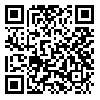Volume 6, Issue 3 (6-2019)
jbrms 2019, 6(3): 42-48 |
Back to browse issues page
Download citation:
BibTeX | RIS | EndNote | Medlars | ProCite | Reference Manager | RefWorks
Send citation to:



BibTeX | RIS | EndNote | Medlars | ProCite | Reference Manager | RefWorks
Send citation to:
Jaafarpour M, Mozafari M, Khani A. Evaluating the undergraduate midwifery students' live experiences of the objective structured clinical examination (OSCE) assessment process: A phenomenological study. jbrms 2019; 6 (3) :42-48
URL: http://jbrms.medilam.ac.ir/article-1-422-en.html
URL: http://jbrms.medilam.ac.ir/article-1-422-en.html
Department of Nursing, Faculty of Nursing and Midwifery, Ilam University of Medical science, Banganjab, Ilam, Iran , nimakhani@gmail.com
Abstract: (3519 Views)
Introduction: Assessing the range of skills that midwives require is very important. This study was aimed at investigating live experiences of midwifery students from the Objective Structured Clinical Examination (OSCE) as an assessment tool.
Materials and methods: This qualitative study was conducted with a phenomenological approach and five pre-internship undergraduate midwifery students who undertook Objective Structured Clinical Examination, participated in this study. Purposive and voluntary sampling methods were utilized. Data were collected using in-depth, unstructured and individual interviews. Data were analyzed using Colaizzi's method.
Results: Following analysis, five main themes were emerged: previous preparation, implementation of OSCE, OSCE content, accuracy of OSCE and feedback of OSCE in clinical practice. The most important theme was feedback to students about their learning activity.
Conclusion: According to our findings, OSCE help midwifery students to recognize their weaknesses and thus improve their skills in clinical trainings. In addition, OSCE is a valuable tool to learn necessary skills for the profession of midwifery. Based on this study results, we suggest that OSCE assessment is a very beneficial method in midwifery education.
Materials and methods: This qualitative study was conducted with a phenomenological approach and five pre-internship undergraduate midwifery students who undertook Objective Structured Clinical Examination, participated in this study. Purposive and voluntary sampling methods were utilized. Data were collected using in-depth, unstructured and individual interviews. Data were analyzed using Colaizzi's method.
Results: Following analysis, five main themes were emerged: previous preparation, implementation of OSCE, OSCE content, accuracy of OSCE and feedback of OSCE in clinical practice. The most important theme was feedback to students about their learning activity.
Conclusion: According to our findings, OSCE help midwifery students to recognize their weaknesses and thus improve their skills in clinical trainings. In addition, OSCE is a valuable tool to learn necessary skills for the profession of midwifery. Based on this study results, we suggest that OSCE assessment is a very beneficial method in midwifery education.
Keywords: Clinical assessment, Undergraduate students, Objective structured clinical examination (OSCE)
Type of Study: Research |
Received: 2019/07/3 | Accepted: 2019/10/4 | Published: 2019/06/9
Received: 2019/07/3 | Accepted: 2019/10/4 | Published: 2019/06/9
Send email to the article author
| Rights and permissions | |
 |
This work is licensed under a Creative Commons Attribution-NonCommercial 4.0 International License. |





